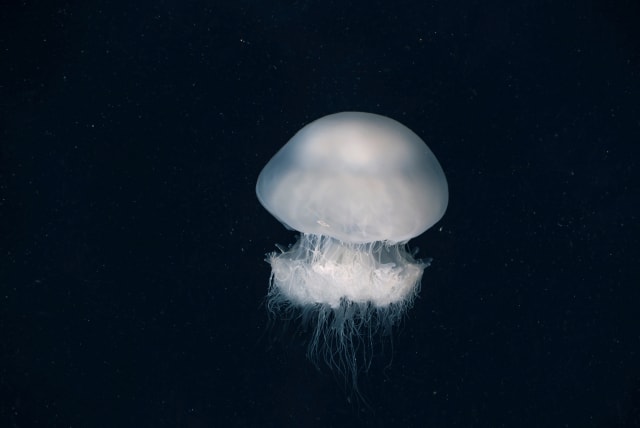Huge jellyfish, once coveting Israel's warmer seasons, seen off Israel's coast

Vast swathes of jellyfish, which typically flock to the Israeli coasts during summer, have been seen in great numbers this winter, signaling an abundant summer.
Wandering filament jellyfish, which are the most common jellyfish species, are confused. Huge numbers of the water-logged invertebrates have now been seen off the Israeli coast, even though they usually arrive in these waters during the bathing system in the summer.
Last summer and fall, the Mediterranean Sea coast of Israel was almost completely devoid of jellyfish. “Winter swarms of these jellyfish have been a matter of routine in recent years, but this year, the size of the jellyfish is definitely unusual. After a summer without jellyfish, and the enormous size of those in the winter swarms, we anticipate that the coming summer will be relatively abundant in jellyfish,” said the University of Haifa’s AMBER Lab marine biologist Dr. Dor Edelist.
Marine biologists speak on the phenomenon
One of the founders of the “Jellyfish Among the People” website (at www.meduzot.co.il), Edelist and Prof. Dror Angel said that there are several possible explanations for the giant jellyfish phenomenon. The main one is the impressive amounts of precipitation in February that brought much fertilizer to the sea. As a result, it developed algae, followed by a bloom of the zooplankton that feeds on it, and finally, the jellyfish that feed on it.
“The last time we had such a phenomenon, of a summer without jellyfish followed by huge winter swarms, was in 2016/17. After that, we witnessed intense swarms in the summer of 2017, so we are also waiting to see what will happen in June and July,” Edelist concluded.
Jerusalem Post Store
`; document.getElementById("linkPremium").innerHTML = cont; var divWithLink = document.getElementById("premium-link"); if (divWithLink !== null && divWithLink !== 'undefined') { divWithLink.style.border = "solid 1px #cb0f3e"; divWithLink.style.textAlign = "center"; divWithLink.style.marginBottom = "15px"; divWithLink.style.marginTop = "15px"; divWithLink.style.width = "100%"; divWithLink.style.backgroundColor = "#122952"; divWithLink.style.color = "#ffffff"; divWithLink.style.lineHeight = "1.5"; } } (function (v, i) { });

